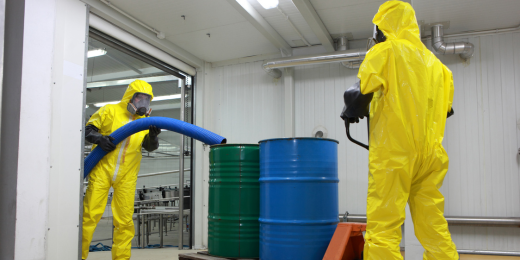Some Of Reclaim Waste
Some Of Reclaim Waste
Blog Article
What Does Reclaim Waste Do?
Table of ContentsReclaim Waste Can Be Fun For EveryoneNot known Details About Reclaim Waste Some Known Incorrect Statements About Reclaim Waste Things about Reclaim WasteThe Basic Principles Of Reclaim Waste
Domestic sewage waste refers to the waste and products from a domestic septic storage tank. The correct administration and disposal of residential sewage waste require liquid waste to be moved to a sewer treatment plant where the appropriate techniques and equipment are applied to purify and dispose of waste.
Commercial waste commonly includes potential hazards, such as flammable products or a mix of liquid and solid waste items, and calls for an advanced and in-depth disposal process. The disposal of business waste typically involves the purification of waste before transport to make sure secure and proper disposal. Industrial waste is developed from by-products and overflow of commercial procedures and manufacturing.
This type of waste can not use the same sewer monitoring transport or processes as septic or commercial fluids. The industrial waste monitoring process requires the evaluation and screening of fluid waste before it undergoes the disposal process (liquid waste removal melbourne). Drainage waste is the liquid waste that originates from overflow and excess stormwater in highly populated areas or cities
Drainage waste can trigger contamination and flooding if not handled properly. Making sure appropriate waste monitoring can protect against catastrophes and decrease environmental harm.
7 Simple Techniques For Reclaim Waste
Get in touch with PROS Providers today to learn more about our waste management and disposal solutions and the appropriate means to take care of the fluid waste you create.
(https://reclaimwaste1.edublogs.org/2024/11/12/efficient-liquid-waste-removal-and-disposal-your-complete-guide-to-sustainable-waste-management/)This so-called 'wastewater' is not only a crucial resource however, after treatment, will certainly be released to our land, waterways or the sea. Utilized water from commodes, showers, baths, cooking area sinks, laundries and commercial processes is recognized as wastewater.

water made use of to cool equipment or clean plant and devices). Stormwater, a form of wastewater, is overflow that moves from agricultural and city areas such as roof coverings, parks, gardens, roadways, courses and rain gutters right into stormwater drains, after rainfall. Stormwater flows unattended directly to neighborhood creeks or rivers, eventually getting to the sea.
Get This Report on Reclaim Waste
In Queensland, most wastewater is treated at sewage therapy plants. Wastewater is moved from residential or commercial websites via a system of sewers and pump stations, called sewerage reticulation, to a sewage treatment plant. Regional federal governments build, preserve and operate most sewer therapy plants. Operators are accredited under the Environmental Management Act 1994 to discharge treated wastewater at an acceptable environmental requirement into waterways.
The Division of Natural Resources encourages regional governments regarding managing, operating and maintaining sewage systems and therapy plants. In unsewered locations, city governments may need householders to install individual or home sewer treatment systems to deal with residential wastewater from bathrooms, kitchens, washrooms and washings. The Department of Natural Resources authorises the usage of house systems when they are shown to be effective.
In some new neighborhoods, therapy of some stormwater to eliminate litter, sand and crushed rock has started using gross toxin traps. Wastewater therapy occurs in 4 phases: Removes strong matter.
Uses small living microorganisms recognizes as micro-organisms to break down and eliminate continuing to be dissolved wastes and fine bits. Micro-organisms and wastes are included this post in the sludge.
The Facts About Reclaim Waste Uncovered
Nutrient elimination is not readily available at all sewage treatment plants because it requires expensive specialised equipment. It is becoming more common in Queensland. Clear liquid effluent produced after therapy might still have disease-causing micro-organisms. If this effluent is launched right into waterways such as rivers or the sea, the micro-organisms will at some point die out.

Most wastewater moves into the sewage system. Under the Act, regional federal governments provide approvals and licences for ecologically pertinent activities (Periods) including wastewater launches that might have a neighborhood impact.
Little Known Questions About Reclaim Waste.
Otherwise, samples are considered lab evaluation. Commonly many examinations are required to establish the levels of each of the different contaminants such as oils, heavy metals and chemicals in water. Surveillance provides factual info about water top quality and can confirm that licence problems are being fulfilled. The information acquired via monitoring provides the basis for making water quality choices.
Report this page